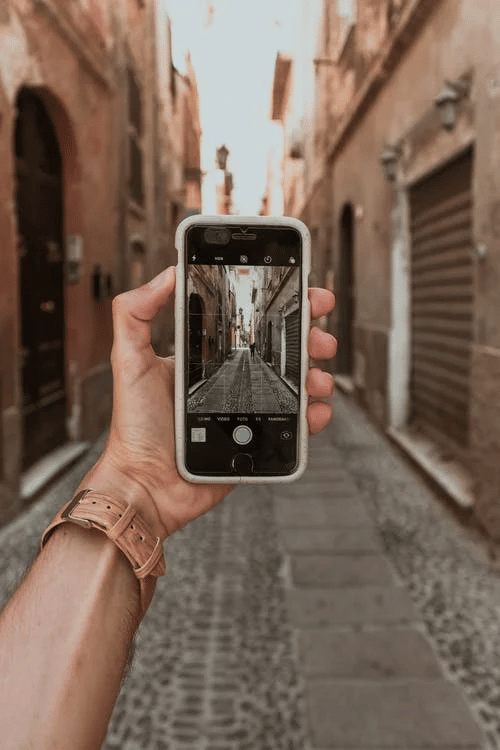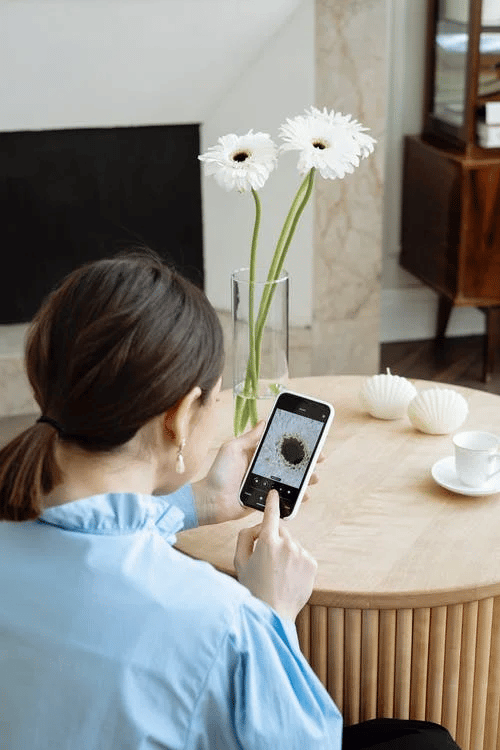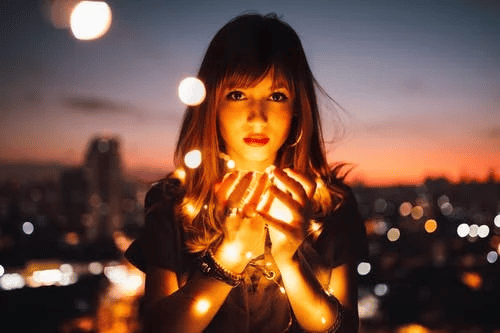When you purchase through links on our site, we may earn an affiliate commission. Here’s how it works.
Do you want to take photographs on your iPhone? iPhone is one the best smartphone to take portrait photography, but it can be very challenging to take stunning portrait photographs.
A recent study shows that 83% of iPhone users use photo and video apps. It proves that iPhone portrait photography is highly popular.
For most people, portraits are one of the most common types of smartphone iPhone portrait photography.
There are numerous reasons why using a smartphone is a good option for portrait photography. For starters, most smartphones have a Portrait or Aperture mode.
10 Things to Consider for iPhone Portrait Photography
It would be best to consider some facts to snap a great shot described below:
1. Camera Settings
Most smartphone camera applications have several distinct modes, and it is useful to know which ones to use in different scenarios.
Naturally, the ‘Portrait’ mode is best for photographing people from two to eight feet.

10 Things to Consider for iPhone Portrait Photography – Camera settings
After you’ve snapped the photo using your iPhone, you can rapidly alter the level of background blur and apply lighting effects like ‘high key’ If you have the option, select the Portrait mode, which produces less contrast and is more mild hues.
Reduce the contrast and color saturation if you have manual controls.
Playing with your device’s features also entails selecting one that isn’t expected.
In typical conditions, a ‘night’ option can diminish contrast with accentuated dynamic range, which explains the “‘Aperture’ options to blur the background and make the subject stand out.
2. Exposure
Lighting is crucial in portrait iPhone portrait photography, maybe more so than anything else. When the lighting is uneven or the scene has a lot of contrast, you can throw off iPhones.
Working with only your phone’s built-in capabilities can dramatically improve exposures, but it’s also occasionally a matter of shifting your posture or framing differently.

10 Things to Consider for iPhone Portrait Photography – Editing
You can also employ exposure compensation, indicated by a small sun symbol after you’ve tapped to establish your focus.
If the scene is too bright, draw it down; if it’s too dark, pull it up till you obtain a more balanced look.
3. Editing
You can make a good portrait unique by changing it a little using the best photo editing software. One method is to edit meticulously to accomplish a lot of different things.
After you’ve snapped your portrait, open it in your preferred editing app for minor editing. Begin by adjusting the exposure and light.
Then,, you can make more noticeable changes. For example, you can make your image more contrasty. To take a shot that is darker and moodier, you can reduce the exposure.
To create black-and-white portraits, use the Snapseed app or VSCO.
For a dark portrait effect, increase the contrast and decrease the exposure. For more effective edits, use applications like Mextures to enhance your photos.
These apps have filters that will elevate your artistic editing to new heights. If you want your iPhone portrait to be the best it can be, make sure you tweak it.
4. Background
It’s not simply about having a fantastic subject in iPhone portrait photography. It’s also essential to have a decent background. What does a tremendous background entail? An excellent background is straightforward.

10 Things to Consider for iPhone Portrait Photography – Background
Your subject is the primary focus of the photograph and should not become disoriented in a flurry of activity. Also, make sure your subject is dressed in a color that contrasts with the surroundings.
Otherwise, your subject will become lost in the crowd! Another approach is to use a background blurring app or Portrait mode to shoot amazing iPhone portrait photographs to pop your subject.
5. Lighting
If you want to take stunning photos, you must shoot in the most delicate light possible. The subject looks better in bright light, and poor lighting flattens the image. Which light is the best?

10 Things to Consider for iPhone Portrait Photography – Lighting
Diffused window light is ideal for indoor portraits. When you use a window, you get a lot of bright, directional light. Ensure to have enough natural light when photographing indoors.
The photo will be sharp and clean, rather than grainy or fuzzy if there is ample natural light. It’s preferable to photograph portraits outside while the sun is low in the sky.
Portraits can also benefit from overcast skies where the light is delicate and diffused on a gloomy day. The best part is that you may shoot in dim light at any time of the day.
However, it is advisable to avoid photographing people in direct sunlight. Shadows cast by direct sunlight will make your photos hazy and unpleasant.
6. Portrait Lighting
You can utilize Portrait Lighting if you have an iPhone 8 Plus, iPhone X, iPhone XR, XS, or XS Max. What is Portrait Lighting and How Does It Work?
Portrait Lighting is a characteristic of the Portrait mode. When you turn on Portrait Lighting, the images you get look like you took them in a studio.
Open your shot in the Photos app to apply the Portrait Lighting effect and select Edit.
There are five distinct lighting options for portraits. Please scroll through the Portrait Lighting menu to switch.
Natural light does not affect your photograph. Use this if you want your portraits to look as natural as possible.
7. Use Depth Control
If you have an iPhone XR, iPhone XS, or iPhone XS Max, you can use the newest Portrait mode function, Depth Control.
After you’ve shot your portrait photo, you may use Depth Control to adjust the degree of background blur.
How do you do this? First, take a shot in Portrait mode. Then, open the Portrait option in the Photos app and select Edit.
Blur the background with the Depth slider at the bottom. Less blur draws attention to the entire scene. Use Depth Control if you want to make the greatest possible background.
8. Use Grid for The Best Composition
For better compositions, align your subject with the grid lines. Getting the focus in iPhone portrait photography is similar to getting the focus in any other type of photography.
It’s all about the person behind the camera and visually appealing compositions.
The rule is to use a powerful composition technique that can create pictures, paintings, posters, and other types of imagery.
According to this guideline, each image should be divided into nine equal portions by two vertical and horizontal lines.
The photo’s most essential features should be placed at or along the intersections of those lines.
When you have a grid to assist you in seeing the lines and sections, it’s much easier to imagine them.
Go to your iPhone’s Settings to enable the grid, then scroll down to the camera icon and check that the Grid option is enabled.
9. Use Accessories
Extend the functionality of your smartphone by adding accessories. When it comes to learning how to take decent images with an iPhone, buying additional accessories for your iPhone might not be the first thing that comes to mind.
However, if you plan to use your smartphone for photography regularly, you should invest in simple equipment.
Some are necessary, while others are entertaining or beneficial in the appropriate circumstances.
An iPhone tripod – these are inexpensive and help when the light starts to fade, allowing you to capture beautiful slow shutter speed images.
The more expensive ones charge your iPhone faster and last longer before running out.
A small LED light can be helpful when shooting after dark; a light shone at an angle is far more flattering than a smartphone’s flash, which flashes at the same angle as the lens.
A simple backup device – the SanDisk iXpand Base – an innovative, inexpensive gadget that backs up your iPhone whenever you charge it — eliminates the need for an iCloud subscription when your iPhone fills up with images.
Clip-on lenses aren’t required, but they can significantly expand the capabilities of your standard lens.
An excellent case — shooting with your iPhone increases your possibility of dropping it! Invest in a good cause.
10. Try Shooting In HDR
Our eyes can discern highly contrasting scenes such as sunsets, and we’re so accustomed to it that we don’t even notice.
However, the iPhone camera (or any other sensor) cannot capture such significant brightness dynamic ranges.

10 Things to Consider for iPhone Portrait Photography – Try shooting in HDR
So the HDR option is here to save the day! HDR, or high-dynamic-range imaging, is an iPhone portrait photography method that allows the camera to capture dark and light portions of the image.
Open the camera app to use the HDR feature, hit “HDR” in the top left corner of the screen, and then select “On.”
Summary
Having an iPhone in 2022 is a thrilling experience. Let’s everyone take advantage of its fantastic camera.
Those are just a few pointers we’ve picked up to help you take outstanding portrait-mode photos with your iPhone.
We expect you’ve learned something new about iPhone portrait photography and shooting overall due to the suggestions mentioned above! If you haven’t tried them yet, go ahead and do so.
See Also